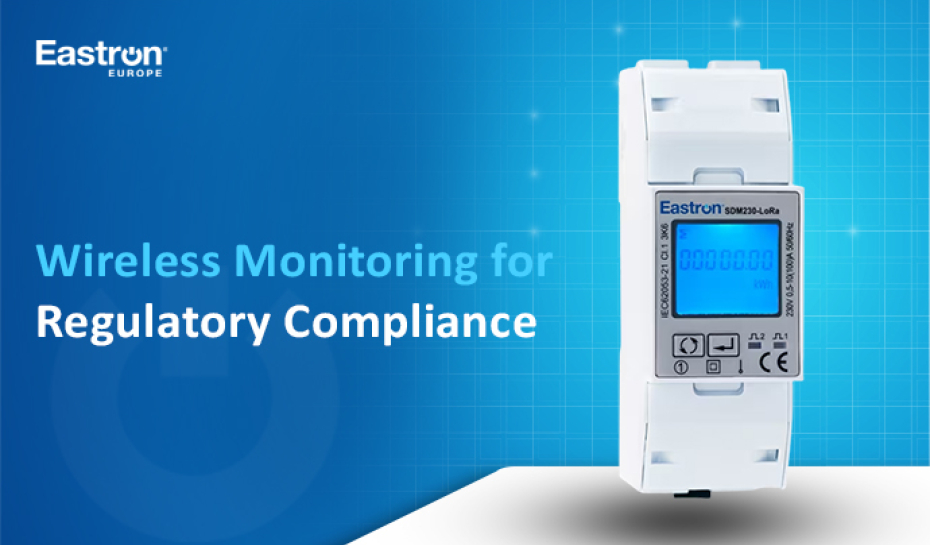
Ensuring Compliance in Regulated Industries with Wireless Energy Monitoring
A wireless energy monitor provides a powerful solution for regulated industries in the UK to stay compliant while gaining real-time insights into power usage across facilities. With the rise of remote energy monitors, businesses can now centralise energy data, track anomalies, and automate reporting, without the need for manual inspections or hardwired systems.
Let’s explore the compliance factor deeper.
The Importance of Compliant Wireless Energy Monitors in the UK
Traditional electricity meters are being replaced with smart meters, which are deemed an essential national infrastructure upgrade for Great Britain. The UK government has been taking sustainable resource usage seriously and mandated that energy suppliers in England, Scotland, and Wales must begin switching all customers to smart meters that take half-hourly readings from October 2025. Ofgem, or the Office of Gas and Electricity Markets in the UK, helps the industrial sector in the country to achieve environmental improvements. It is responsible for suppliers' compliance with their smart metering obligations. The regulator has proposed to update the 2015 regulations that apply to smart meters, as well as traditional meters, in order for customers to receive the best possible service from their suppliers.
The government expects all metering devices to be compliant with the Smart Meter Equipment Technical Specification (SMETS), meaning the wireless energy meters must have functionalities such as seamless transmission of metering device readings to respective energy suppliers and receiving data remotely. They should comply with statutory requirements.
Wireless remote monitoring devices fit the requirement aptly, with their real-time data visibility feature. With the help of these smart energy meters, businesses across all industries can:
Monitor load profiles and detect anomalies instantly.
Benchmark energy use across departments or facilities.
Generate audit-ready reports for different regulatory standards.
Set alerts for energy threshold breaches or abnormal consumption.
Integrate with Building Management Systems (BMS) and cloud analytics tools.
For example, a wireless energy monitor is genuinely beneficial for the healthcare sector, where a stable energy supply and documenting consumption for backup systems is mandatory. Eastron Europe’s wireless metering solution, like the SDM230-LoRa, can support hospitals for monitoring energy loads (isolation wards/critical equipment zones), in the absence of invasive wiring.
Why Compliant Remote Metering is a Necessity in Regulated Industries
In regulated sectors such as pharmaceuticals, chemicals, utilities, and food production, industry regulatory compliance extends far beyond product safety. It includes energy management standards like:
ESOS (Energy Savings Opportunity Scheme)
SECR (Streamlined Energy and Carbon Reporting)
ISO 50001 – Energy Management Systems
EU & UK emissions directives
Non-compliance can result in fines, revoked licences, or reputational damage. Meeting compliance requirements often means documenting energy consumption at granular levels, across multiple locations, and in real-time.
Another important reason is data integrity. This is concerning regulated industries. Eastron Europe’s smart metering devices support encrypted communication protocols and secure data transfers. This ensures energy logs are not only accurate but also tamper-proof. This feature fulfills one of the key audit points in any compliance framework.
Moreover, remote electricity monitors reduce the risk of human error, as energy data does not rely on manual meter readings or spreadsheets. This automated approach is increasingly favoured by auditors and regulators alike.
What is the Role of Eastron Europe’s Wireless Energy Meters in Compliance
Eastron Europe is a leading name in the UK’s remote monitoring industry. The company’s wireless energy monitor delivers real-time data through wireless communication protocols such as Wi-Fi, 4G, NB-IoT, and LoRaWAN.
A few highlighted features of Eastron Europe’s smart energy meters include:
LoRaWAN communication in Eastron Europe’s SDM230-LoRaWan is perfect for distributed sites where access to Ethernet is close to negligible.
Wi-Fi support for three-phase meter (e.g., SDM630MCT-Wi-Fi) allows seamless integration into existing wireless networks.
The Remote Gateway (IoT) acts as a hub for collecting, aggregating, and transmitting data from multiple meters via cloud platforms or BMS systems.
For example, UK-based chemical manufacturing plants can deploy Eastron Europe’s SDM630MCT-Wi-Fi across their high-load processes to stay compliant with SECR (Streamlined Energy & Carbon Reporting). These wireless meters can easily integrate into their central monitoring dashboard, thus assisting plants to easily detect inefficiencies that can easily lead to a substantial drop in energy waste. This not only ensures full compliance but also improves operational efficiency.
How to Plan for the Future with Smart, Scalable Energy Monitoring
As regulatory frameworks continue to tighten and energy costs rise, investing in smart energy monitoring is no longer an option; it’s a business imperative. Wireless energy monitoring systems provide future-proof solutions with:
Remote upgrades and firmware updates
Integration with IoT platforms
Multi-site scalability
Custom dashboards and alerts
Businesses that implement smart, compliant infrastructure today will be better positioned to meet the regulatory challenges of tomorrow and save costs while doing so.
Conclusion
In regulated UK industries, ensuring energy regulatory compliance is both a legal duty and a strategic advantage. Eastron Europe's advanced wireless energy monitors are safe and reliable for capturing data in real-time data, reporting, and auditing.
Whether you're aiming to meet SECR obligations or simply automating your energy monitoring, their wireless metering systems give you the tools to comply confidently and efficiently.
